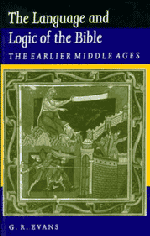Book contents
- Frontmatter
- Contents
- Preface
- Acknowledgements
- List of abbreviations
- List of ancient and mediaeval sources
- Biographical notes
- Introduction
- Part I The background
- 1 The monastic way
- 2 Bible study in the schools
- 3 A standard commentary: the Glossa Ordinaria
- Part II Lectio: surface and depths
- Part III Disputatio
- Conclusion
- Notes
- Select bibliography
- Index
3 - A standard commentary: the Glossa Ordinaria
Published online by Cambridge University Press: 01 June 2011
- Frontmatter
- Contents
- Preface
- Acknowledgements
- List of abbreviations
- List of ancient and mediaeval sources
- Biographical notes
- Introduction
- Part I The background
- 1 The monastic way
- 2 Bible study in the schools
- 3 A standard commentary: the Glossa Ordinaria
- Part II Lectio: surface and depths
- Part III Disputatio
- Conclusion
- Notes
- Select bibliography
- Index
Summary
The running commentary had many merits as a vehicle of teaching on the Bible. In its written form it allowed the individual reader to turn to the margin or the space between the lines of the book he was reading and find a difficult word or grammatical construction explained, an extract from Gregory or Augustine to clarify a perplexing passage, ready selected for him and conveniently placed to hand. The student listening to his master's lectures was presented with an oral version of the commentary. He had an opportunity to ask questions and be further enlightened. (A number of twelfth century masters remark a little defensively even: ‘At this point someone will ask’, or: ‘Perhaps here the question will be raised.’)
The context of such teaching might be that of the schoolroom; Peter Abelard described how he went to hear the famous master Anselm at Laon and thought his lectures so poor and thin that he could do better himself, and the next day he lectured on Ezekiel (with the aid of a crib, or Expositor) to an admiring crowd. In this arena the teaching was businesslike and brisk. Or in a monastic context or a house of canons like that in which Hugh taught at St Victor in the 1120s and 1130s, a commentary might be developed in a relaxed and companionable way in a series of talks to the brothers.
- Type
- Chapter
- Information
- The Language and Logic of the BibleThe Earlier Middle Ages, pp. 37 - 48Publisher: Cambridge University PressPrint publication year: 1984



